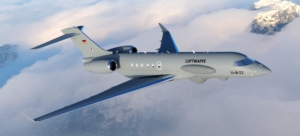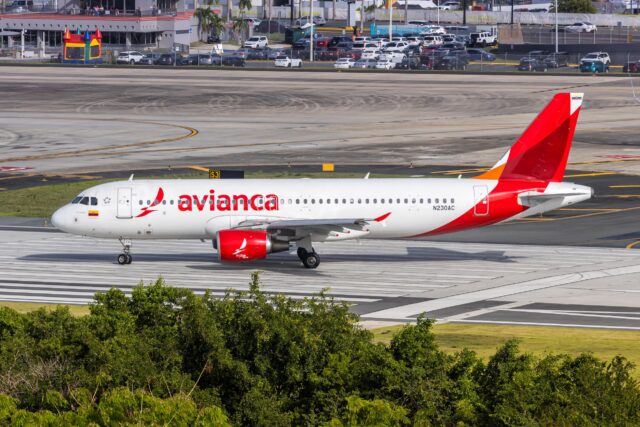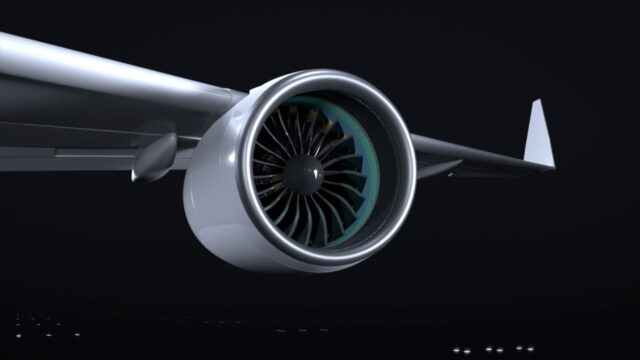Industry Partners Celebrate Successful First Flight of PEGASUS Aircraft
October 25, 2024

The first of three Bombardier Global 6000 aircraft modified for the German armed forces’ Persistent German Airborne Surveillance System (PEGASUS) programme made its maiden flight at Bombardier’s Wichita Flight Test Center on 23 October.
The aircraft will remain at Bombardier’s Wichita facility for further flight testing before being flown to Lufthansa Technik Defence in Hamburg, Germany for systems installation and integration and aircraft certification. A ceremony was held to celebrate this milestone, attended by representatives from Hensoldt, Lufthansa Technik, Bombardier Defense and the German Armed Forces.
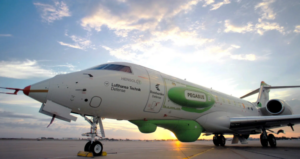
Steve Patrick, Vice President, Bombardier Defense said that: “Germany’s next generation signal intelligence aircraft is flying high. This successful first flight is the result of the strong collaboration and shared knowledge between Hensoldt, Lufthansa Technik Defence, Bombardier Defense and our suppliers, to get the modified, high-performing Global 6000 aircraft for the PEGASUS program in the air. With flight testing regularly underway from Bombardier’s Wichita base, the aircraft continues to gather essential certification data to improve and perfect the platform before it moves to the next stage.”
Dietmar Thelen, Head of Spectrum Dominance Division at Hensoldt noted that: “Today marks an important milestone for the PEGASUS programme. With the integration of our Kalætron-Integral system, we are delivering key components that are essential for the ‘reconnaissance of tomorrow’. This achievement underscores the excellent cooperation between Hensoldt, Lufthansa Technik Defence and Bombardier Defense.”
For Lufthansa Technik Michael von Puttkamer, Vice President Special Aircraft Services said that: “Seeing the first PEGASUS aircraft taking to the skies bearing the Lufthansa Technik Defense logo fills me with pride and also joyful anticipation, as it brings us one decisive step closer to welcoming this aircraft back at our site. I’d like to congratulate and thank the outstanding Bombardier Defense team for their great performance in reaching this important project milestone, and I look forward to the upcoming flight test activities as well as the ongoing cooperation with Hensoldt in the subsequent integration and certification of their highly sophisticated signals intelligence system.”
Hensoldt, Lufthansa Technik Defense and Bombardier have collaborated closely on the joint design activity.
Hensoldt is the overall programme lead, and is supplying the ‘Kalætron Integral’ system. The company has adapted the systems architecture to meet the operational needs of the German Bundeswehr, and hardware and software development is currently underway. It has been reported that demonstrations have already shown the immense potential and capabilities of the system.
Bombardier was tasked with the ‘foundational’ modification work package, collaboratively working with Lufthansa Technik Defence. Bombardier is undertaking the extensive structural modification work on the three aircraft at Wichita, and will conduct the initial ground and flight test activities.
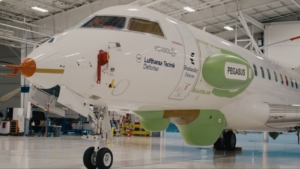
The first structurally modified Global 6000 was rolled out in June 2024, and flew for the first time on 23 October. The highly skilled test pilots of the Bombardier Flight Test Centre (BFTC) team will now validate key aspects of the programme, aiming to demonstrate the aircraft’s performance and ability to meet the German Air Force’s critical mission requirements.
Lufthansa Technik will take the modified aircraft from Bombardier and fit and integrate the Hensoldt reconnaissance system onto the platform, completing the system integration at its special-mission centre in Hamburg, Germany. responsible for the regulatory certification of PEGASUS at the overall aircraft level. Lufthansa Technik has completed its design activities for the integration of the mission system, the additional civil and military avionics systems as well as the aircraft cabin. The production process of interior parts has also already started in order to ensure the components’ readiness for immediate installation when the aircraft arrives in Hamburg.
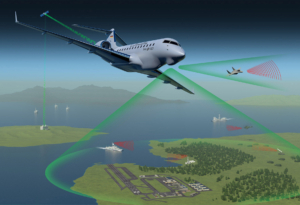
The PEGASUS airborne SIGINT platform is expected to become operational from 2026, performing highly critical signal surveillance missions for the German armed forces, and finally ‘filling’ a capability gap that opened up in 2010, with the retirement of the SIGINT configured Atlantic aircraft operated by Marinefliegergeschwader 3 at Nordholz.
Germany had originally intended that its fleet of five ‘Peace Peek’ modified Breguet Br1150 Atlantic SIGINT aircraft would be replaced by the RQ-4E EuroHawk HALE (High Altitude Long Endurance) UAV from 2011.
The EuroHawk proved uncertifiable for use within European airspace under ICAO rules without an anti-collision system and without technical data on the aircraft that Northrop Grumman refused to share; thereby effectively preventing any operations within European airspace or the airspace of any ICAO member. The additional cost of certification was reportedly more than €600 million (US$780 million), and the programme was terminated on 15 May 2013.
Germany briefly considered installing the EuroHawk’s SIGINT payloads onto a new derivative of the US Navy MQ-4C Triton which had full icing and lightning-strike protection, and was built with certification over civilian airspace in mind, meeting the STANAG 4671 requirements that the EuroHawk did not. There were still concerns as to bandwidth availability and the vulnerability of datalinks to hostile jamming.
Eventually, it was decided that a manned platform was required, and in June 2021, Hensoldt was awarded a contract to supply and integrate an airborne SIGINT system based on its ‘Kalætron Integral’ SIGINT system on three Bombardier Global 6000 aircraft under the Persistent German Airborne Surveillance System (PEGASUS) programme. The crew complement has not been revealed, but there may have been an aspiration to match or come close to the Peace Peek aircraft previously used for the role, which carried a COMINT crew of four and an ELINT crew of two, plus a mission supervisor.
The new aircraft are expected to be operated by a Luftwaffe unit (unlike the Atlantics), probably AKG-51 ‘Immelman’. The operational personnel will belong to 3./EloKaBtl 912 at Nienburg Weser.
